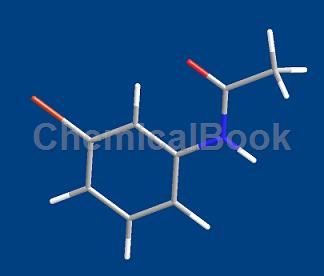Background and overview[1]
3-Bromoacetanilide can be used as a pharmaceutical synthesis intermediate and an organic synthesis intermediate. It is mainly used in laboratory research and development processes and chemical and pharmaceutical synthesis processes. If 3-bromoacetanilide is inhaled, please move the patient to fresh air; if the skin comes into contact, take off contaminated clothing, rinse the skin thoroughly with soap and water, and seek medical treatment if you feel uncomfortable; if the eyes come into contact, seek medical attention. Separate eyelids, rinse with running water or saline, and seek medical attention immediately; if ingested, rinse mouth immediately, do not induce vomiting, and seek medical attention immediately.
The ketoxime compounds rearrange into substituted amides under the action of acidic catalysts, which is called the Beckmann rearrangement reaction. This reaction was first discovered by the German chemist Ernst Otto Beckmann in 1886. The reaction mechanism is that under the action of acid, the oxime is first protonated, then removes a molecule of water, and at the same time reacts with the hydroxyl group The group in the anti-position migrates to the electron-deficient nitrogen atom, and the formed carbocation reacts with water to form the amide.

The Beckmann rearrangement reaction plays an extremely important role in organic synthesis and is often used to determine the structure of ketone compounds. The Beckmann rearrangement is a stereospecific reaction. The migrating hydrocarbon group and the leaving group (hydroxyl group) in the ketoxime molecule are anti-position to each other. During the migration process, the configuration of the migrating carbon atom remains unchanged. Industrially, Beckmann rearrangement of cyclohexanone oxime is used to mass-produce ε-caprolactam, which is a monomer for the synthesis of nylon-6. The good properties of amides, such as large polarity, stability and structural diversity, also make it one of the most common and reliable functional groups in all branches of organic chemistry.
Preparation[1]
Preparation of 3-bromoacetanilide: Take a 50mL reaction flask, transfer 3-bromoacetophenone oxime (0.21g, 1mmol) dissolved in 2mL acetonitrile into the reaction flask, and under stirring conditions, add 3-bromoacetophenone oxime (0.21g, 1mmol) dissolved in 1mL Bismuth trifluoromethanesulfonate (0.10g, 0.15mmol) was added to acetonitrile, and finally 2-3 mL of acetonitrile was added, and the reaction was stirred in an 80°C oil bath. After 3-bromoacetophenone oxime and bismuth trifluoromethanesulfonate were mixed and stirred, the solution immediately presented a slightly white suspension. TLC (DCM: 100%) monitored the reaction until the reaction was complete, and the reaction continued for approximately 4 hours. Stop heating, use a rotary evaporator to spin the solvent to dryness, then add water and DCM for extraction, combine the organic phases, and dry over anhydrous Na2SO4. Filter, concentrate, separate by column chromatography (DCM: 100%), spin dry, pump dry, weigh the dry product 3-bromoacetanilide and calculate the yield to 60%. mp86-88℃;
Main reference materials
[1] CN201810141850.1 Use of bismuth triflate as a catalyst for Beckmann rearrangement reaction

 微信扫一扫打赏
微信扫一扫打赏

